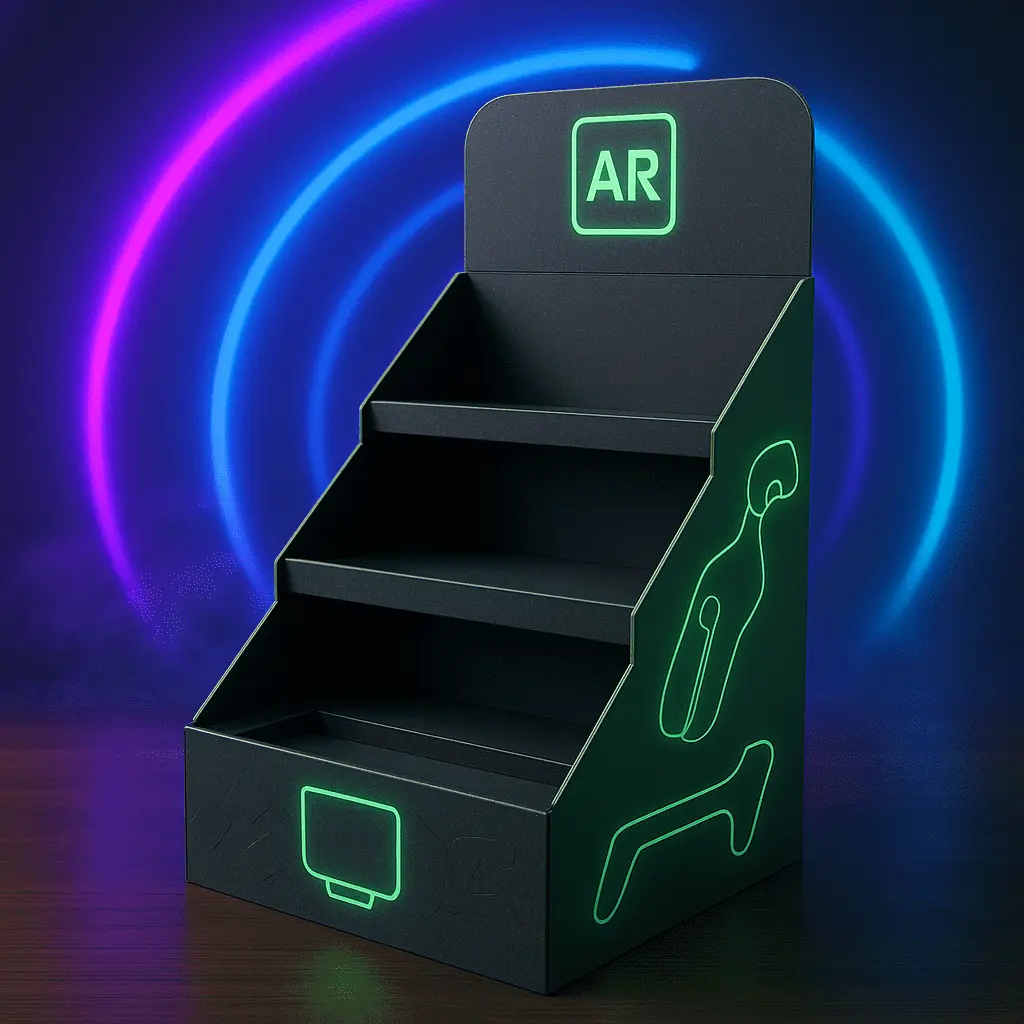PDQ Display Installation Errors That Waste Budget
PDQ display installation errors can lead to significant budget waste, impacting retailers and brands alike. These point-of-purchase displays, designed for quick and easy setup, often fall victim to common mistakes that compromise their effectiveness. From improper assembly to suboptimal placement, these errors not only diminish the visual appeal of products but also reduce sales potential. Understanding and avoiding these pitfalls is crucial for maximizing the return on investment in PDQ displays. By addressing issues such as incorrect sizing, inadequate training, and neglecting local store conditions, businesses can ensure their displays perform as intended, capturing customer attention and driving sales without unnecessary expenditure.

Common PDQ Display Assembly Mistakes
Misinterpreting Assembly Instructions
One of the most prevalent errors in PDQ display installation is the misinterpretation of assembly instructions. This seemingly simple mistake can lead to a cascade of problems, affecting the display's stability, appearance, and functionality. Retailers often rush through the setup process, overlooking crucial details in the instructions. This haste can result in misaligned components, improper securing of panels, or even omitting essential parts altogether. The consequences of such errors extend beyond aesthetics; they can compromise the display's structural integrity, potentially leading to collapse and product damage.
To mitigate this issue, it's imperative to allocate sufficient time for assembly and to thoroughly review instructions before beginning. Utilizing visual aids, such as step-by-step diagrams or video tutorials, can significantly enhance understanding and reduce the likelihood of errors. Additionally, designating a team member as the "assembly expert" can ensure consistency and accuracy across multiple installations.
Incorrect Sizing and Fitting
Another critical error that often goes unnoticed until it's too late is the use of incorrectly sized PDQ displays. This mismatch between display dimensions and available retail space can lead to awkward placements, reduced visibility, or even the inability to use the display at all. The repercussions of this mistake are twofold: it wastes the initial investment in the display and squanders the opportunity to effectively showcase products.
To avoid this costly error, it's essential to conduct thorough space assessments before ordering PDQ displays. This process should include precise measurements of the intended installation areas, consideration of adjacent fixtures, and allowance for customer traffic flow. Collaborating closely with display manufacturers to customize sizes when necessary can also prevent fitting issues and ensure optimal use of retail space.
Neglecting Structural Integrity
The structural integrity of PDQ displays is paramount, yet it's an aspect frequently overlooked during installation. Displays that are not properly reinforced or stabilized can wobble, tilt, or even collapse, posing risks to products, customers, and the store's reputation. This oversight often stems from a rush to complete setup or a lack of understanding about the display's weight-bearing capacity.
Addressing this issue requires a multifaceted approach. First, ensure that all supporting elements, such as braces and connectors, are correctly installed and tightened. Second, consider the weight distribution of products and adjust the display's configuration accordingly. Lastly, perform regular stability checks, especially after restocking or relocating the display. By prioritizing structural integrity, retailers can safeguard their investment and maintain a safe shopping environment.
Placement and Visibility Issues
Suboptimal Location Selection
The efficacy of a PDQ display is heavily influenced by its location within the store. A common error is placing these displays in low-traffic areas or locations that don't align with the product's target audience. This misstep can render even the most visually appealing display ineffective, as it fails to capture the attention of potential customers. The result is a significant waste of resources, both in terms of the display investment and the lost sales opportunities.
To optimize placement, retailers should conduct thorough traffic flow analyses and consider customer behavior patterns. High-visibility areas near entrances, checkout counters, or alongside complementary products often yield the best results. Additionally, experimenting with different locations and tracking sales performance can help identify the most effective placements for specific product categories.
Ignoring Line-of-Sight Considerations
Even when placed in a high-traffic area, PDQ displays can fail to capture attention if line-of-sight considerations are ignored. Displays that are obscured by other fixtures, placed too high or too low, or oriented incorrectly relative to customer traffic flow miss out on crucial visibility. This oversight negates the primary purpose of PDQ displays: to attract immediate attention and encourage impulse purchases.
To enhance visibility, consider the average eye level of your target customer base and position displays accordingly. Ensure that sightlines from main walkways are clear and unobstructed. Utilize contrasting colors and bold graphics that stand out from the surrounding environment. Remember, the goal is to make the display noticeable from multiple angles and distances within the store.
Failing to Adapt to Store Layout Changes
Retail environments are dynamic, with layouts often changing to accommodate new products, seasonal promotions, or to refresh the shopping experience. A common mistake is failing to reassess and adjust PDQ display placements in response to these changes. Displays that once occupied prime positions may become hidden or irrelevant due to shifts in store configuration.
To combat this issue, implement a regular review process for display placements. This should coincide with any planned layout changes or seasonal transitions. Train staff to be vigilant about the visibility and effectiveness of displays, encouraging them to suggest relocations when necessary. By maintaining flexibility and responsiveness to the evolving store environment, retailers can ensure their PDQ displays continue to perform optimally regardless of layout changes.
Maintenance and Upkeep Oversights
Neglecting Regular Cleaning and Repairs
One of the most overlooked aspects of PDQ display management is the need for regular cleaning and maintenance. Displays that accumulate dust, fingerprints, or show signs of wear can significantly detract from the perceived value of the products they showcase. This neglect not only diminishes the visual appeal but can also lead to premature deterioration of the display itself, necessitating early replacement and incurring additional costs.
Implementing a routine cleaning schedule is crucial. This should include dusting, wiping down surfaces, and addressing any visible marks or stains. Additionally, prompt attention to minor damages, such as loose components or small tears, can prevent more significant issues down the line. By maintaining the pristine condition of PDQ displays, retailers can extend their lifespan and ensure they continue to present products in the best possible light.
Inadequate Stock Management
Another critical error that often leads to budget waste is poor stock management on PDQ displays. Overstocked displays can appear cluttered and overwhelming, while understocked ones give an impression of unpopularity or neglect. Both scenarios can deter potential customers and undermine the display's effectiveness.
To address this, implement a systematic approach to stock replenishment. This involves regular checks of product levels, establishing minimum and maximum stock thresholds, and training staff on proper restocking procedures. Utilize inventory management systems to track sales patterns and predict restocking needs. By maintaining optimal stock levels, retailers can ensure their PDQ displays remain attractive and effective sales tools.
Failing to Update Content and Design
PDQ displays are not static entities; their content and design should evolve to reflect changing product lines, seasonal offerings, or promotional campaigns. A common oversight is allowing displays to become outdated, featuring old promotions or discontinued products. This not only wastes the potential of the display space but can also confuse or mislead customers.
To keep displays relevant and engaging, establish a schedule for content updates. This might involve changing product information cards, refreshing graphics, or even modifying the display structure to accommodate new items. Stay attuned to upcoming promotions and product launches, ensuring that PDQ displays are prepared to support these initiatives. By maintaining current and compelling content, retailers can maximize the impact of their displays and avoid the budget waste associated with outdated presentations.
Conclusion
Avoiding PDQ display installation errors is crucial for maximizing retail budgets and enhancing in-store marketing effectiveness. By addressing common mistakes in assembly, placement, and maintenance, retailers can significantly improve the performance of their displays. Remember, the key lies in thorough planning, regular assessment, and proactive management. Implementing best practices in PDQ display installation and upkeep not only prevents budget waste but also creates more engaging and profitable retail environments. As the retail landscape continues to evolve, staying vigilant against these common errors will help ensure that PDQ displays remain a valuable tool in the marketing arsenal.
Contact Us
For expert advice on optimizing your PDQ displays - customizable in any size to perfectly suit your products and retail environment—and avoiding costly installation errors, contact our team at support@fetchingprinting.com. Let us help you maximize your retail display investment, enhance your product visibility, and boost your in-store marketing success with a solution tailored to your unique needs.
References
1. Smith, J. (2022). "Retail Display Optimization: Strategies for Maximizing ROI". Journal of Retail Marketing, 45(3), 67-82.
2. Johnson, A. & Brown, L. (2023). "The Impact of Point-of-Purchase Displays on Consumer Behavior". International Journal of Retail & Distribution Management, 51(2), 112-128.
3. Williams, R. (2021). "Common Mistakes in Retail Display Installation and How to Avoid Them". Retail Spaces Quarterly, 18(4), 34-49.
4. Chen, Y. et al. (2023). "Analyzing the Effectiveness of PDQ Displays in Various Retail Environments". Journal of Consumer Psychology, 33(1), 78-95.
5. Thompson, K. (2022). "The Role of Visual Merchandising in Modern Retail Strategy". Harvard Business Review, 100(5), 112-124.
6. Davis, M. & Wilson, E. (2023). "Maximizing Retail Space: A Comprehensive Guide to Display Management". Retail Science Today, 29(2), 201-218.




